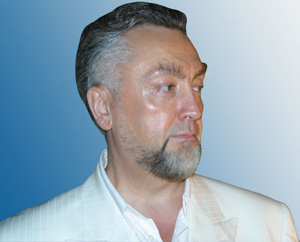
While Palestine's Jews, Christians, and Muslims were living together in peace, the Pope decided to organize a crusade. Following Pope Urban II's call on 27 November 1095 at the Council of Clermont, more than 100,000 Europeans set out for Palestine to "free" the Holy Land from the Muslims and find the fabled wealth of the East. After a long and wearying journey, and much plundering and slaughter along the way, they reached Jerusalem in 1099. The city fell after a siege of nearly 5 weeks. When the Crusaders moved in, they carried out a savage slaughter. All of Jerusalem's Muslims and Jews were put to the sword.
In the words of one historian: "They killed all the Saracens and the Turks they found ... whether male of female."10 One of the Crusaders, Raymond of Aguiles, boasted of this violence:
Wonderful sights were to be seen. Some of our men (and this was more merciful) cut off the heads of their enemies; others shot them with arrows, so that they fell from the towers; others tortured them longer by casting them into the flames. Piles of heads, hands and feet were to be seen in the streets of the city. It was necessary to pick one's way over the bodies of men and horses. But these were small matters compared to what happened at the Temple of Solomon, a place where religious services are normally chanted ... in the Temple and porch of Solomon, men rode in blood up to their knees and bridle reins.11
In 2 days, the Crusader army killed some 40,000 Muslims in the barbaric manner just described.12 The peace and harmony in Palestine, which had lasted since Umar, ended in a terrible slaughter.
The Crusaders made Jerusalem their capital and established a Latin Kingdom stretching from Palestine to Antioch. But their rule was short-lived, for Saladin gathered all of the Muslim kingdoms under his banner in a holy war and defeated the Crusaders at the battle of Hattin in 1187. After this battle, the two leaders of the Crusader army, Reynald of Chatillon and King Guy, were brought into Saladin's presence. He executed Reynald of Chatillon, who had become infamous for the terrible savagery he had committed against Muslims, but let King Guy go, as he had not committed similar crimes. Palestine once again saw the true meaning of justice.
Three months after Hattin, and on the very same day that Prophet Muhammad (pbuh) had been taken from Mecca to Jerusalem for his night journey through the heavens, Saladin entered Jerusalem and freed it from 88 years of Crusader occupation. In contrast to the Crusaders' "liberation" of Jerusalem, Saladin did not touch one Christian in the city, thereby turning aside their fear that they would all be massacred. He merely ordered all Latin (Catholic) Christians to leave Jerusalem. The Orthodox Christians, who were not Crusaders, were allowed to stay and worship as they chose.
Karen Armstrong describes the second capture of Jerusalem in these words:
On 2 October 1187 Saladin and his army entered Jerusalem as conquerors and for the next 800 years Jerusalem would remain a Muslim city. Saladin kept his word, and conquered the city according to the highest Islamic ideals. He did not take revenge for the 1099 massacre, as the Qur'an advised (16:127), and now that hostilities had ceased he ended the killing (2:193-194). Not a single Christian was killed and there was no plunder. The ransoms were deliberately very low ... Saladin was moved to tears by the plight of families who were rent asunder and he released many of them freely, as the Qur'an urged, though to the despair of his long-suffering treasurers. His brother al-Adil was so distressed by the plight of the prisoners that he asked Saladin for a thousand of them for his own use and then released them on the spot... All the Muslim leaders were scandalised to see the rich Christians escaping with their wealth, which could have been used to ransom all the prisoners… [The Patriarch] Heraclius paid his ten-dinar ransom like everybody else and was even provided with a special escort to keep his treasure safe during the journey to Tyre.13
In short, Saladin and his army treated the Christians with great mercy and justice, and showed them more compassion than their own leaders had.
After Jerusalem, the Crusaders continued their barbarity and the Muslims their justice in other Palestinian cities. In 1194, Richard the Lionheart, who is portrayed as a great hero in British history, had 3,000 Muslims, among them many women and children, treacherously executed in the Castle of Acre. Although the Muslims witnessed this savagery, they never resorted to similar methods. Rather, they abided by God's command: "Let not the hatred of a people (who once) obstructed you from the Sacred Mosque lead you to transgress..." (Qur'an, 5:2) and never used violence against innocent civilians. In addition, they never used violence unnecessarily, not even against the defeated Crusader armies.
Crusader savagery and Muslim justice once more revealed a historic truth: An administration built upon the principles of Islam allowed people of different faiths to live together. This fact continued to be demonstrated for 800 years after Saladin, particularly during the Ottoman period.
Foot Notes:
10. “Gesta Francorum, or the Deeds of the Franks and the Other Pilgrims to Jerusalem,” trans. Rosalind Hill, (London: 1962), p. 91. emphasis added
11. August C. Krey, The First Crusade: The Accounts of Eye-Witnesses and Participants (Princeton & London: 1921), p. 261. emphasis added
12. Krey, The First Crusade, p. 262.
13. Armstrong, Holy War, p. 185. emphasis added
[Source: Harunyahya: Palestine]

No comments:
Post a Comment